Pipe inspction robot WATER Series
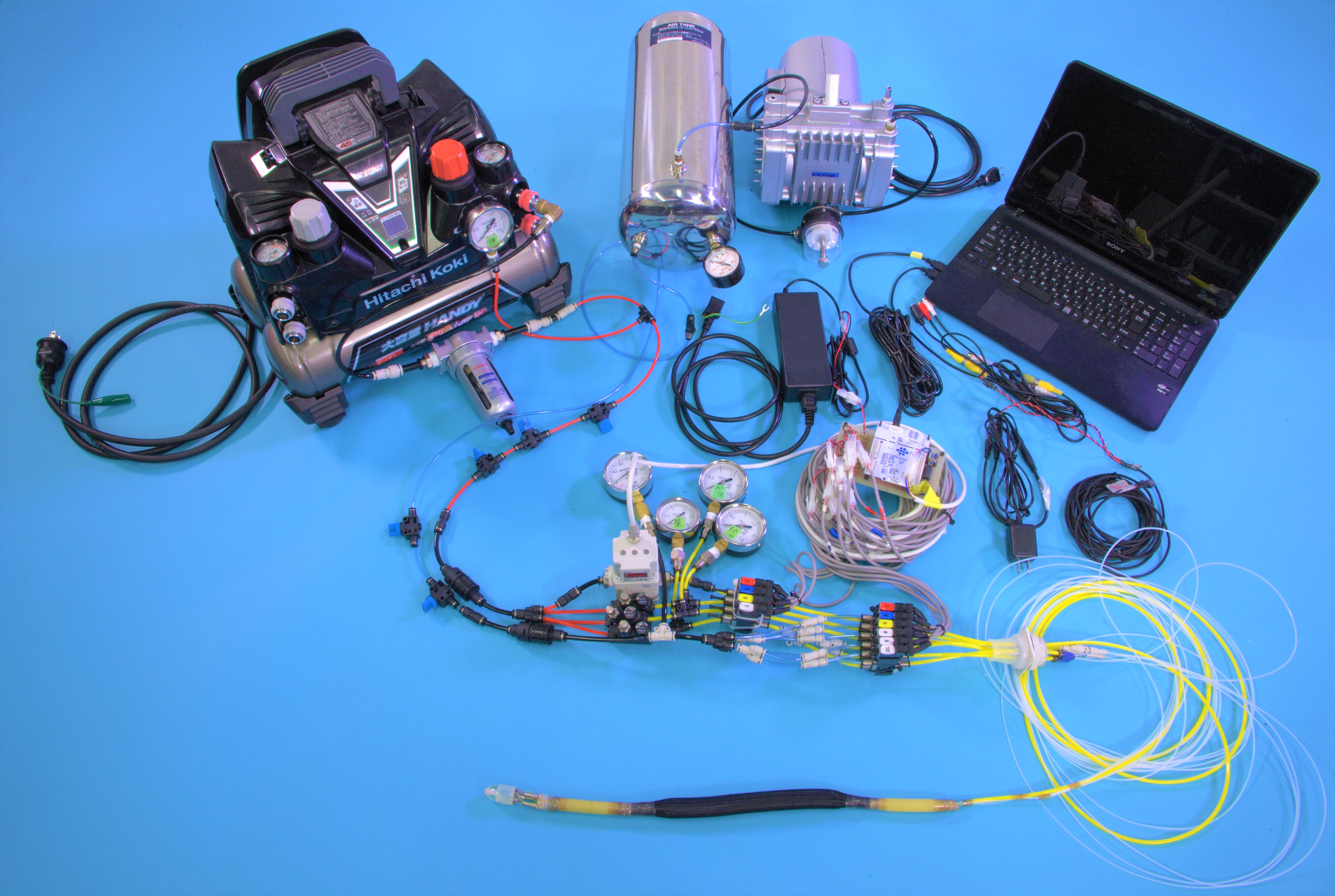
Pipe inspction Robot
Overview
The robot consists of an elongated hose that expands and contracts according to changes in internal pressure, and two balloons in front and behind it, and propels itself like a scale insect. The front of the robot is equipped with a pneumatically driven bending module and a camera. The robot can run in the horizontal or vertical plane through straight pipes with inner diameters of 28[mm] and 53[mm], pass through pipes with inner diameters of 28[mm] and eight curved sections, and pass through and withdraw from curved sections with inner diameters of 53[mm].
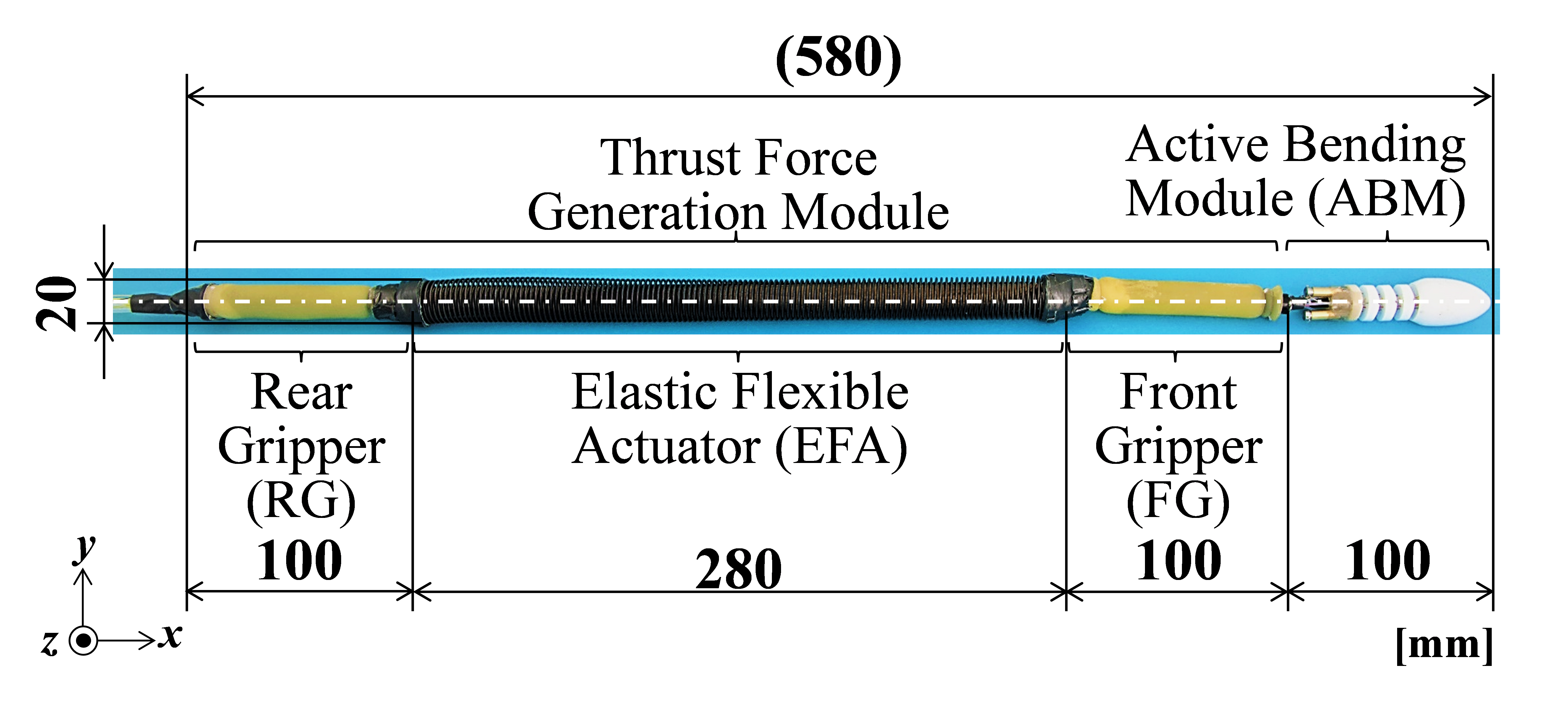
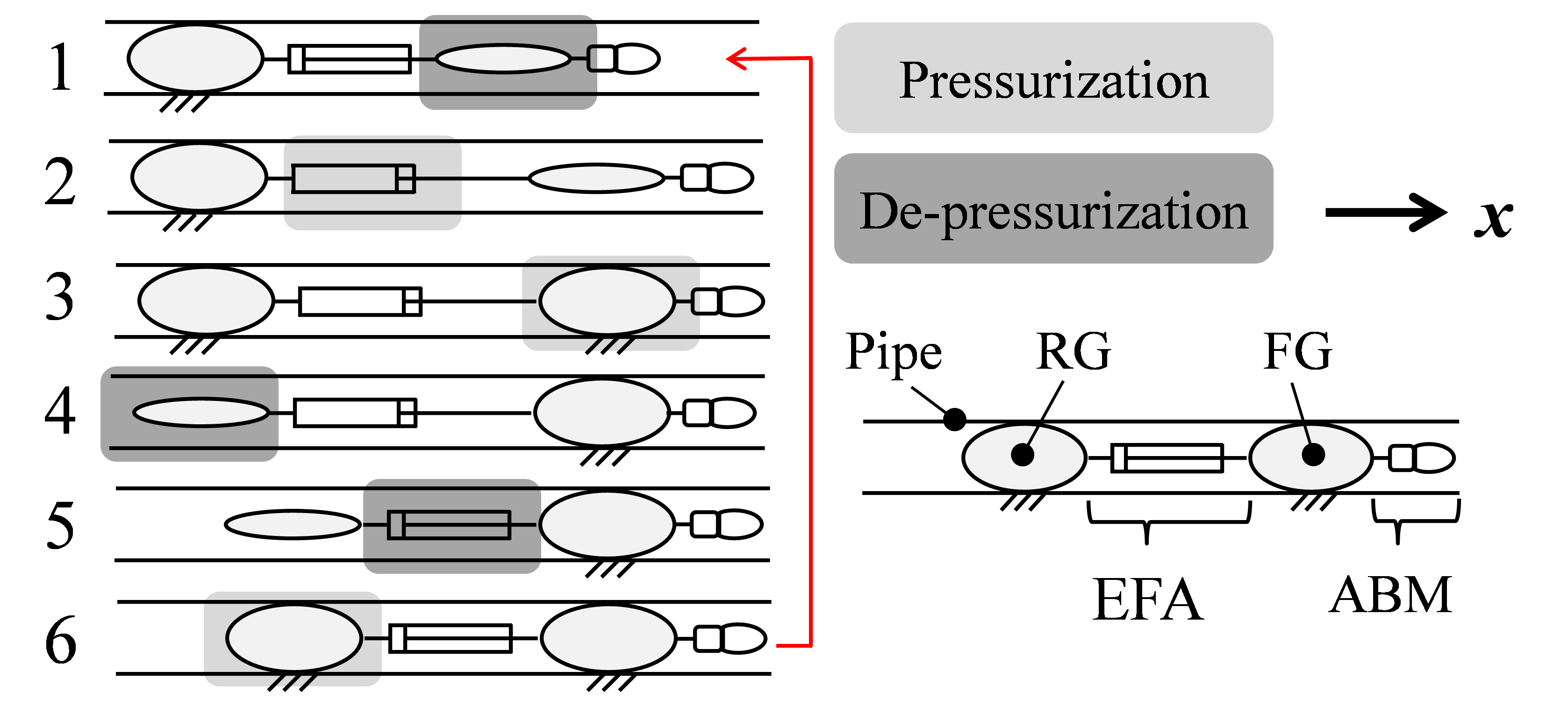
System
The robot is equipped with a camera, a bending module, and a propulsion module, each of which is connected to the ground equipment by communication cables and air tubes. On the ground, there is a pneumatic device to control the pneumatic module of the robot and a PC for operation, so that the robot can be operated while viewing the images from the camera.
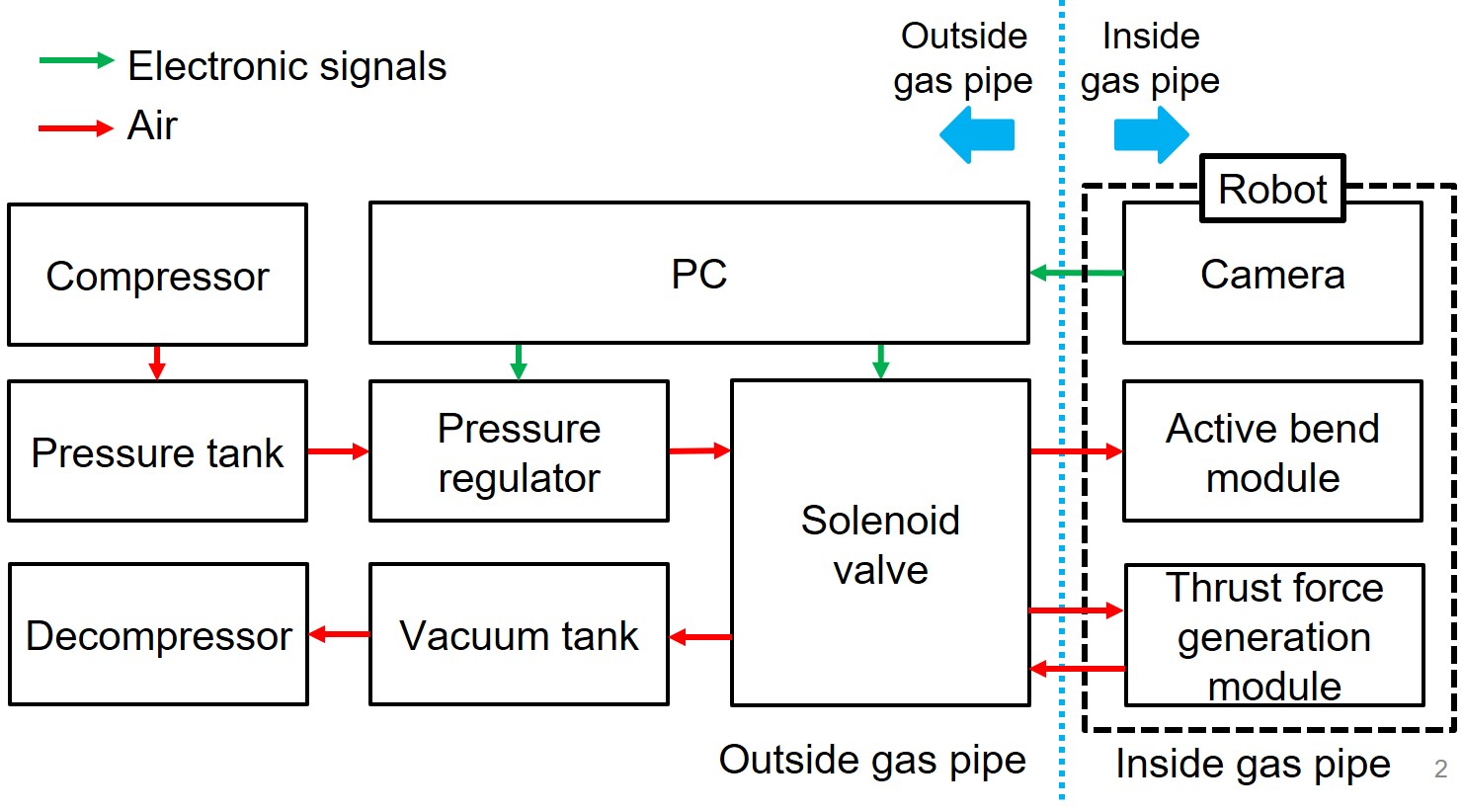
Research Contents
WATER-6 (2020)
Although WATER-5 can pass through all the bends in the assumed pipe, it could not travel in the deep part of the gas pipe. Therefore, we developed WATER-6, a robot that can travel at a depth of 50[m] in a gas pipe, assuming an actual inspection in a gas pipe. WATER-6 is equipped with an elastic flexible actuator with a reverse winding mesh spring that combines a right-handed spring and a left-handed spring. WATER-6 can locomote in a steel pipe while exerting a traction force of 76 [N]. The robot was made to run through a 50 [m] pipe with eight bends that mimicked a real gas pipe, and it was confirmed that the robot could run at a depth of 50 [m] in the gas pipe.

ガス配管深部50 [m]地点で約80 [m]の送気チューブを牽引しながら走行するWATER-6 (16倍速)
[関連論文]
小西瑶果,先﨑翔太郎,中村蒼子,児玉理,清水智壮,大貫彰彦,前田亮,石井裕之,高西淳夫
”ガス管本支管深部での走行が可能な空気圧駆動型管内移動ロボットの開発”,第39回日本ロボット学会学術講演会, 2j3-02,オンライン,2021年9月
Satoshi Kodama,Yoka Konishi,Koki Shindo,Shotaro Senzaki,Toko Nakamura,Akihiko Ohnuki,Minoru
Konno,Hiroyuki Isii,Atsuo Takanishi, "Development of Pneumatic Driven Robot System which can Entry and
Retire from Gas Pipe," 2021 IEEE International Conference on Mechatronics and Automation (ICMA), 2021, pp.
1466-1471, doi: 10.1109/ICMA52036.2021.9512655.
WATER-5 (2019)
The WATER-4 had a problem that it took a long time to remove the robot from the main branch and the success rate was low. The WATER-5 is a robot based on the WATER-4, which enables not only the entry of each bend to the main branch, but also the removal of the robot after entry. The newly developed inferior drive type active bending module enables the robot to withdraw from the main branch pipe. The bending angle of the robot is 84[deg], which is higher than that of the conventional robot, and it is easier to enter the curved part.

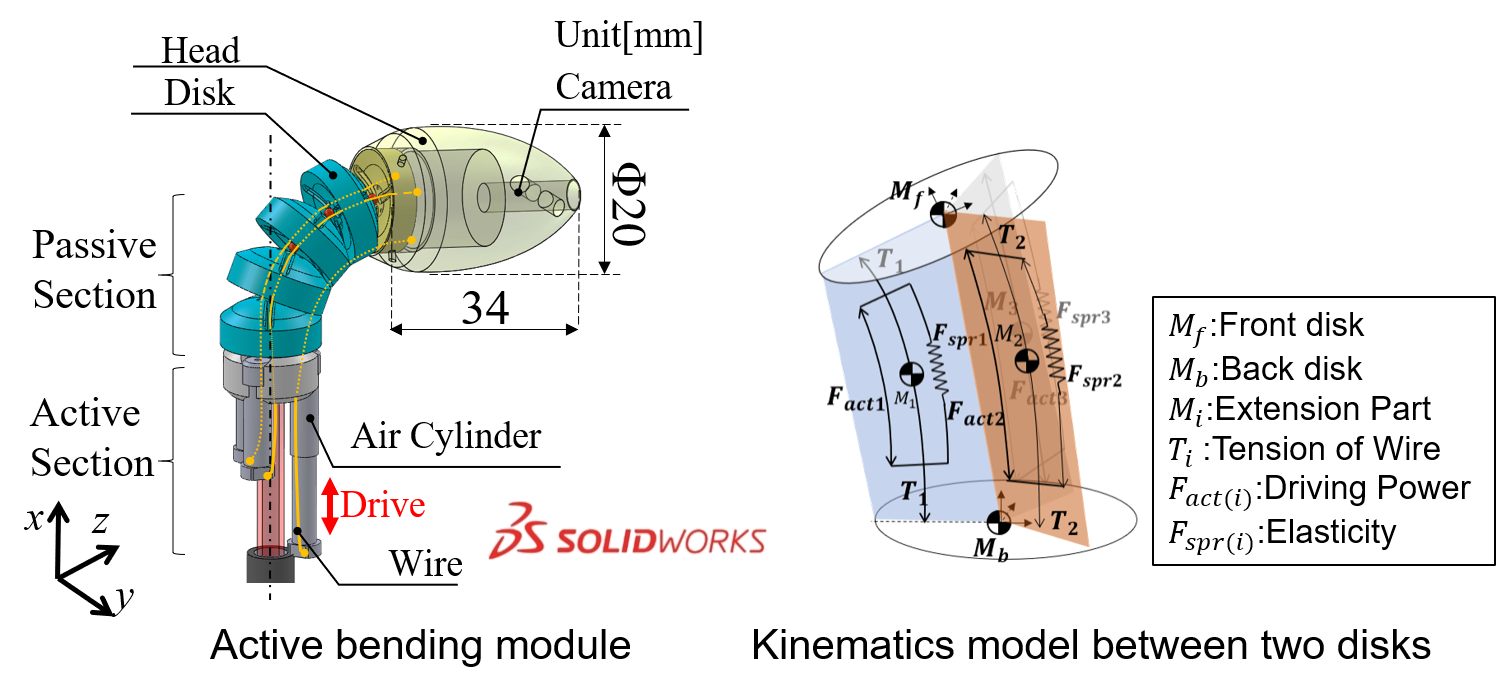
[Research paper (in Japanese)]
児玉理,先﨑翔太郎,中村蒼子,真藤幸暉,今野実,大貫彰彦,高西淳夫,石井裕之,
ガス管本支管への進入および撤収が可能な空気圧駆動型管内移動ロボットの開発,”第38回日本ロボット学会学術講演会”, 3A1-01,オンライン,2020年10月
WATER-4 (2018)
With WATER-3, it was not possible to run the main branch pipe including different diameter cheese, overturning and lateral swing. Therefore, we developed the WATER-4 robot, which is capable of entering the main pipe and passing through the curved part, aiming to enter and remove cheese with different diameters, 50A overturning, and horizontal swing. A cable shorter than the extension hose of WATER-3 was built into the extension hose to enable extension in a curved state, thereby reducing the frictional force on the pipe wall at the curved part and solving these problems.
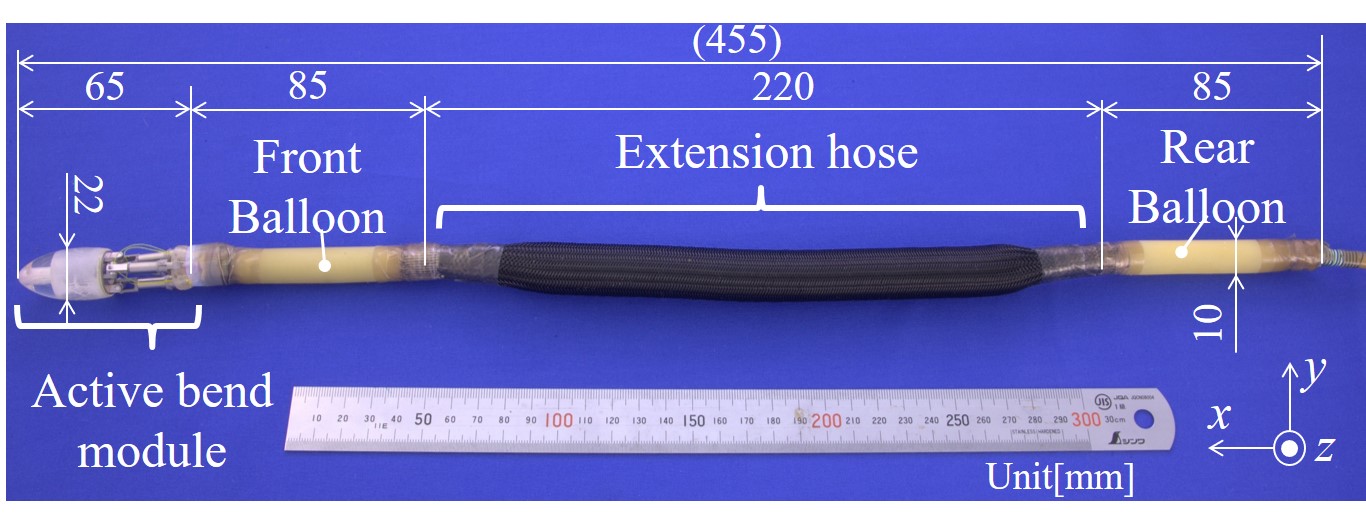
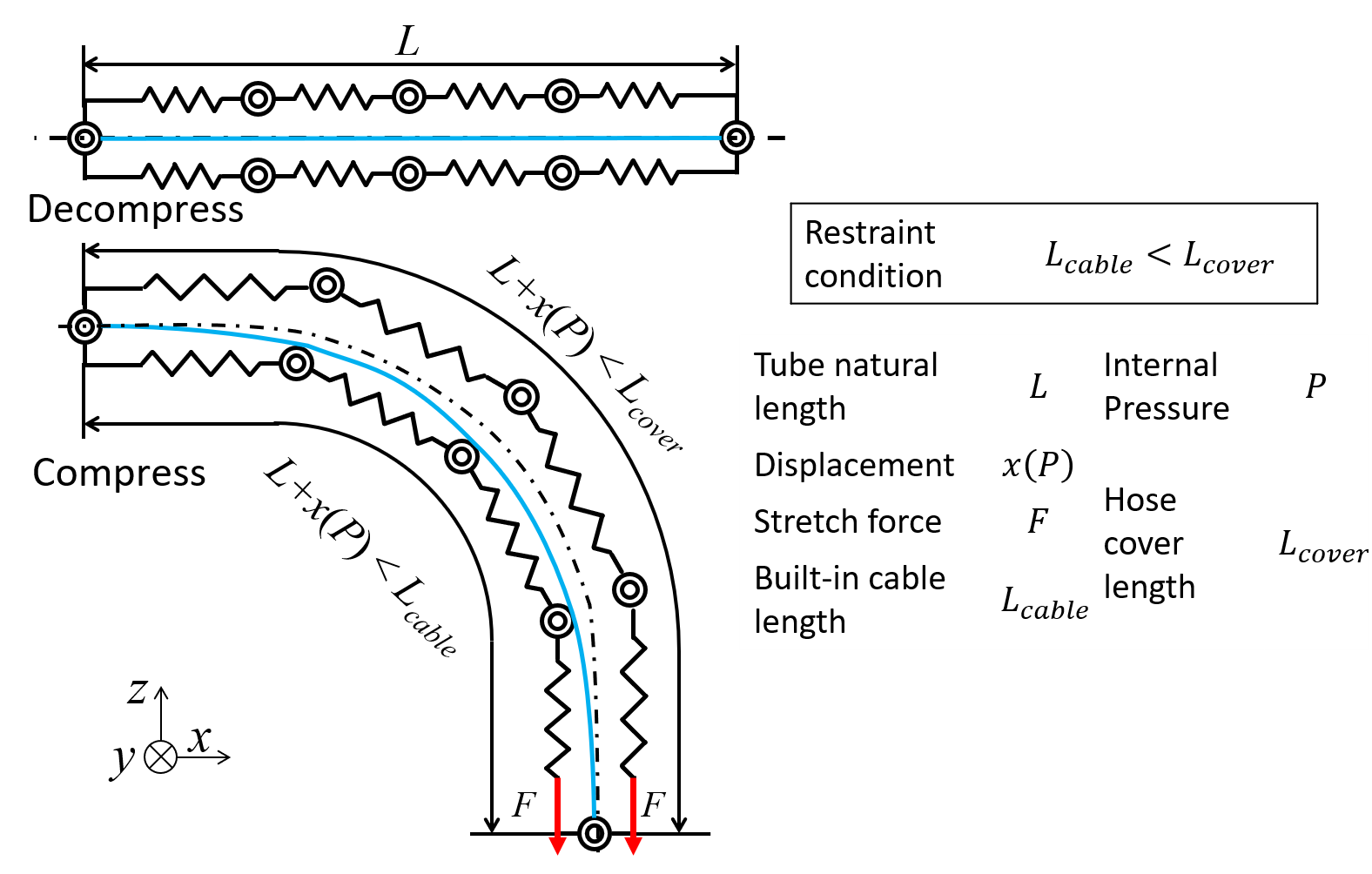
[Research paper (in
Japanese)]
先﨑翔太郎,中村蒼子,真藤幸暉,吉本昂平,今野実,大貫彰彦,高西淳夫,石井裕之,50A管湾曲部への進入および撤収が可能な管内移動ロボットの設計・製作,”第37回日本ロボット学会学術講演会”,
1I2-05, 東京都, 2019年9月
WATER-3 (2017)
Although WATER-2 was able to pass through a simulated 8-bend pipe composed of transparent tubes, the speed
of the robot was too slow for the target work time. Therefore, WATER-3 was developed with the goal of
reducing the passage time of the simulated transparent 8-bend tube to 10[min].
By using natural rubber
tubing as the balloon material, which has high thickness and contraction force, the propulsion cycle was
reduced by about 14%. In addition, it was necessary to slow down the traveling speed at the time of entry,
because the balloon would be damaged if it collided with the vertical part of the T-junction when
traveling under high pressure. By fabricating a metal bending module by cutting, the robot is no longer
damaged and can enter the T-junction pipe without slowing down.
By using the developed robot together with the newly developed tube extruder, the average transit time
was 16 minutes, and the fastest was 10 minutes.
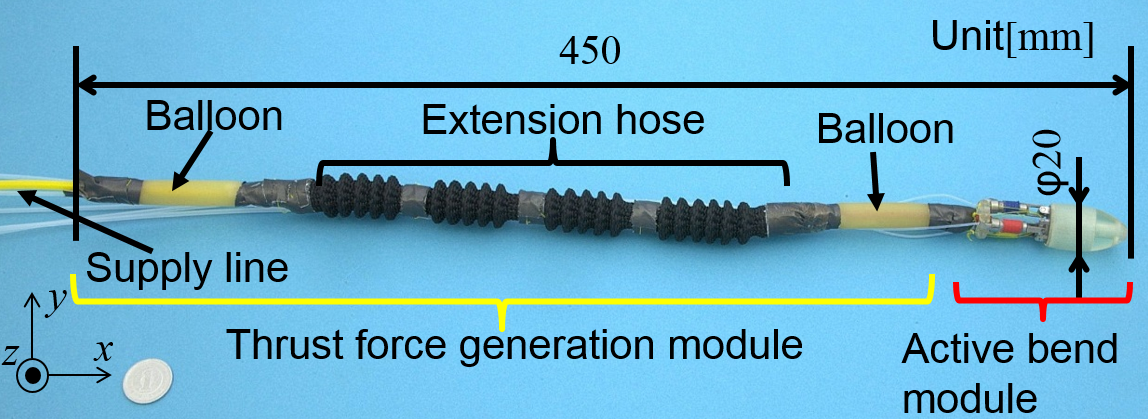
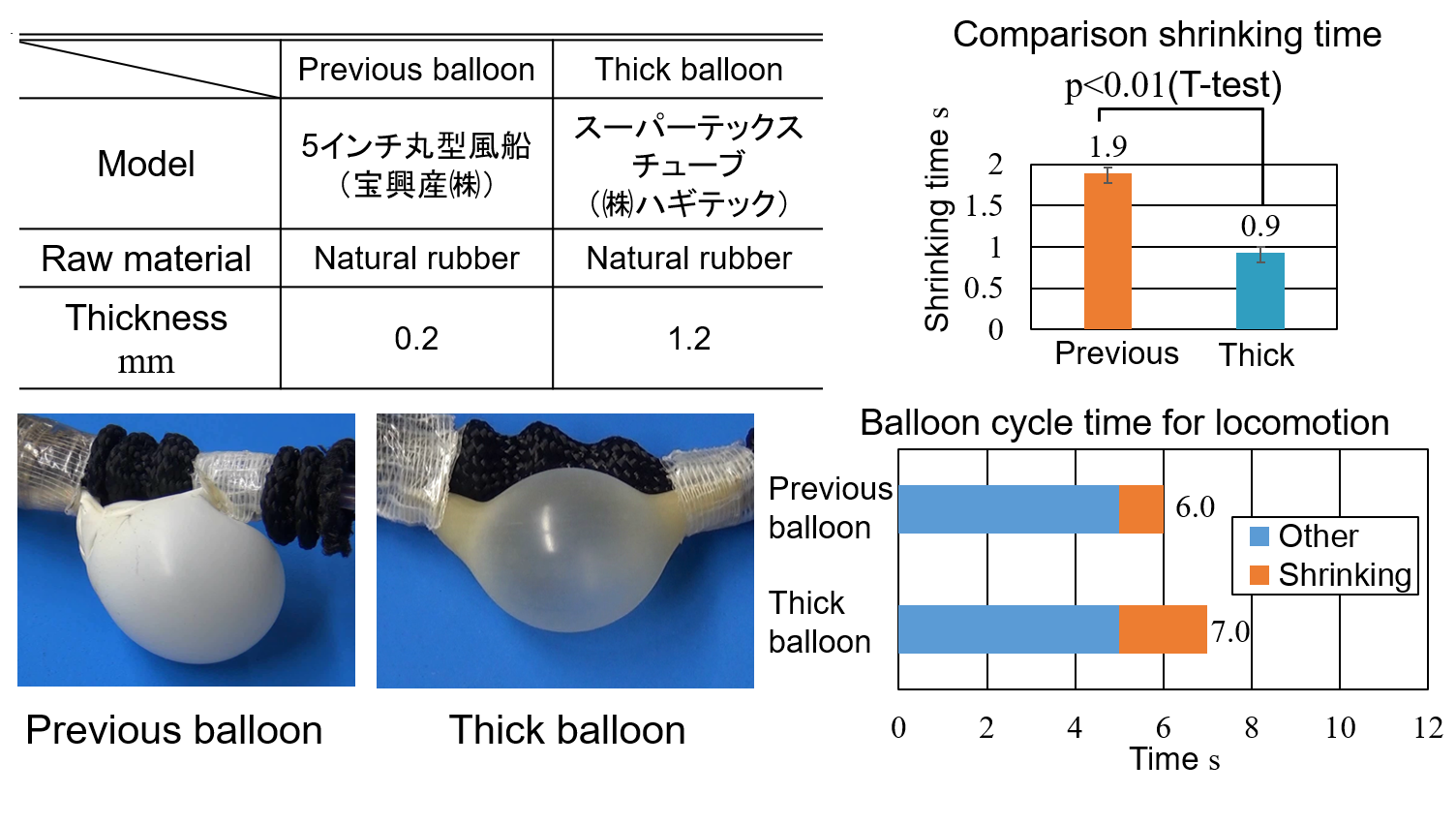
[Research paper (in
Japanese)]
真藤幸暉,吉本昂平,野村幸暉,李駿騁,今野実,大貫彰彦,高西淳夫,石井裕之,高速で湾曲部通過が可能な空気圧駆動型管内移動ロボットの設計・製作,”第36回日本ロボット学会学術講演会”,
3F1-07,2018年9月
WATER-2 (2016)
WATER-1 was unable to pass through the curved part of the 25A pipe. We attempted to solve these problems. To solve the lack of propulsive force, we took the approach of increasing the working pressure of the elongation hose to 0.7 [MPa]. We changed the material of the elongation hose from silicone rubber to natural rubber tube, and confirmed that the elongation hose has low deformation and improved contraction force. We also changed the cover of the elongation hose from a conventional sprinkler hose cover to a bellows folded cover with a different mesh to reduce twisting during elongation. This makes it possible to efficiently convert air pressure into propulsive force.

[Research paper (in Japanese)]
吉本昂平,李駿騁 ,竹内弘美,野村幸暉,今野実,鳥海良一,石井裕之,高西淳夫,” 第35回日本ロボット学会学術講演会”, 2E2-03
,2017年9月
WATER-1 (2015)
We chose the method of propulsion and retraction like a scale insect as the method of traveling in the gas pipe. The designed and fabricated WATER-1 consists of a propulsion module and a bending module. The propulsion module consists of a front balloon, a rear balloon, and an extension hose, and all of these actuators are pneumatically driven. All of these actuators are pneumatically driven. The size of the balloon can be changed according to the amount of air flowing into the balloon, and it can grasp a pipe wall of any size. The elongated hose has the property of extending in the axial direction when pressurized. These actuators are propelled by cyclic pressurization and depressurization. The bending module consists of a three-degree-of-freedom parallel link mechanism, which can bend in any direction by controlling the pressure of three pneumatic cylinders, enabling the selection of branches in the pipe.



[Research paper (in
Japanese)]
野村幸暉,佐藤衛,竹内弘美,今野実,鳥海良一,石井裕之,高西淳夫,伸長ホースと径可変バルーンを用いた管内移動ロボットの開発,”第34回日本ロボット学会学術講演会”,
2U1-03,2016年9月
Speeding up pneumatic response
Overview
The deeper the robot went into the gas pipe, the more pronounced the air pressure response delay became due to the longer subsequent tubes, the greater the pipe resistance, and the greater the air volume required. The solenoid valve, which had been installed on the ground, was installed just before the robot because it would have taken a great deal of time to drive the robot and would have prevented efficient inspections. However, electricity cannot be used in gas pipes to avoid the risk of fire. Another problem with solenoid valves was their large size. Therefore, we designed a small valve that switches the flow path like a solenoid valve, and selected water pressure as the driving source, which can propagate energy responsively to deep areas far from the ground.
Hydraulic drive flow path switching unit
The hydraulic drive channel switching unit consists of two modules: the channel switching module and the on-off module. The flow path switching module allows the user to select which actuator to drive according to the sequential running pattern of WATER. Inside the unit is a channel body with engraved channels to each part of the robot, and the channel body is rotated by water pressure to switch the channels. The on/off module restricts the flow rate to prevent excessive expansion of the balloon used. This module also incorporates a channel body inside and opens and closes the flow path by applying water pressure.